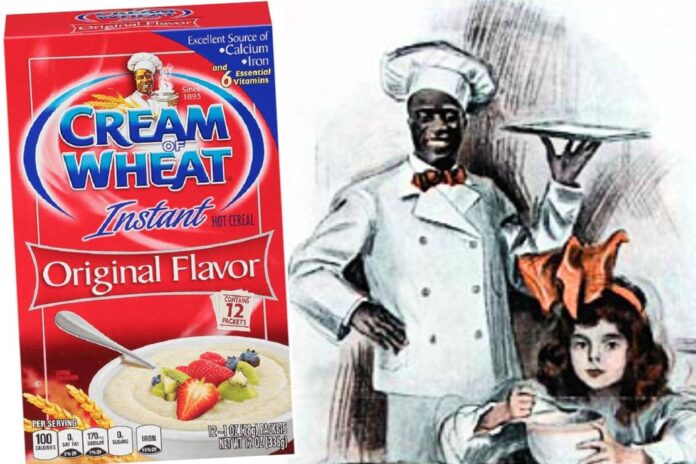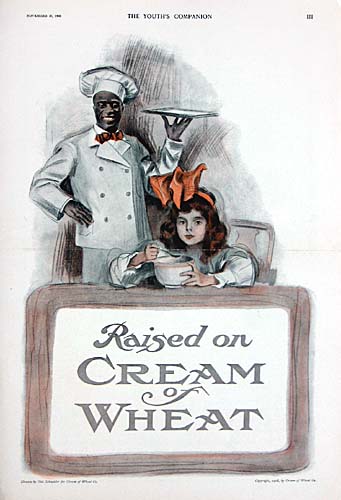The Use of the Grinning Servant
During the Jim Crow period, a time when racist stereotypes were used to degrade Black people, a typical expectation was for Blacks to always smile when talking to whites. In American kitchens, amusement parks, movies, and on many products images were used that displayed Black people in horrible ways. These included cereal and pancake boxes, detergents, soap, Lawn Jocky’s, salt and pepper shakers, stirring rods for drinks, cookbooks, movie advertisements, placemats, and other forms (Amos and Andy TV show). The object of was to brainwash the public with anti-black propaganda designed to make Black people look inferior and always willing to do whatever whites demanded. The grinning Negro was a favorite of white supremacists and we still have some grinning Negroes – Tim Scott for one.
The False Image of the “Happy Slave”
The institution of slavery sought to make it appear that enslaved people were very happy. This false idea flies in the face of reality. Blacks were expected to smile to show subservience and to bend to the will of slave masters. After slavery was somewhat abolished on paper a new form of racism took hold with black-faced minstrels who where whites pretending to be Black in a racist manner. According to Greater Good Magazine,
Black happiness was a constant theme in the American proslavery literature, whose writers even went so far as to maintain “the negro slaves of the South are the happiest . . . people in the world.”
These lies are still around and puppets of political conservatives in today’s world still love to see Blacks supporting them under all sorts of false arguments. One argument suggests that Black people should support MAGA Republicans because “it is better to have one foot in both doors.” Having one foot in the door of white supremacy is self-destruction!
Performing Happiness to Survive
The history of pretended Black happiness, of an exploited ethnic group, was forced upon Black people to hide their true hatred of white supremacy, or to go along with the racist order of doing things in America. Racist whites loved having Blacks around with big smiles as it justifies injustice. The grinning Black man (in real life or caricatures) and Sambo dolls, that can be found in antique shops and all over New Orleans, serves as a picture of acceptance into the white supremacist kingdom of doom. A grinning Negro that is trying to carry the water of a white supremacist politician embodies the old idea of the good “boy” who fawns over white men for acceptance. Tim Scott, a Black Republican Senator, as he grins over Trump, reinforces the white stereotype of Blacks as servile and willing to follow the most racist politicians. The only Black Republican in the U.S. Senate, and true to the Sambo image of a person that loves the enemy more than himself, represents self-hatred, when he said he “loves Trump.” Sick to say the least.
The Legacy of the “Tom” Caricature
According to the Jim Crow Museum, “The Tom caricature portrays black men as faithful, happily submissive servants. The Tom caricature, like the Mammy caricature, was born in ante-bellum America in the defense of slavery. How could slavery be wrong, argued its proponents, if black servants, males (Toms) and females (Mammies), were contented and loyal? The Tom is presented as a smiling, wide-eyed, dark-skinned server: fieldworker, cook, butler, porter, or waiter. Unlike the Coon, the Tom is portrayed as a dependable worker, eager to serve. Unlike the Brute, the Tom is docile and non-threatening to white people. The Tom is often old, physically weak, psychologically dependent on white people for approval.”
Big smiles can mean many things!










I grew up with aunt Jemima and uncle Tom, and they both brought me a feeling of happiness and coziness and a feeling of being home. If they were forced to do this as you say, they sure brought many people comfort and joy. I’m sad that they were forced.